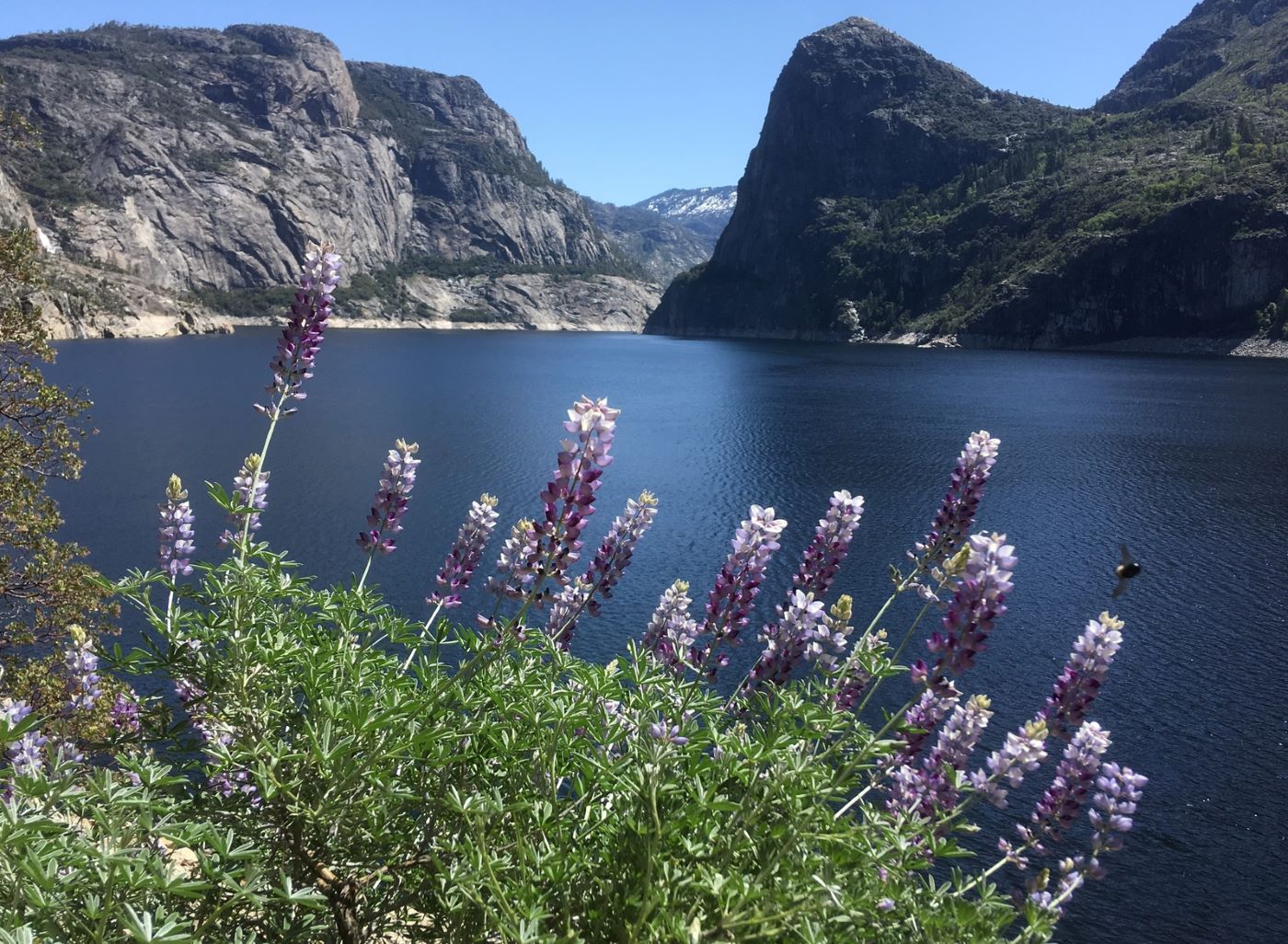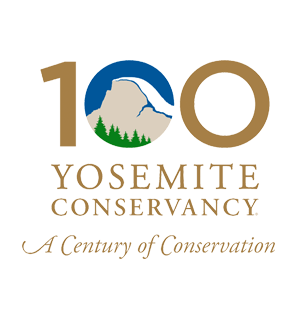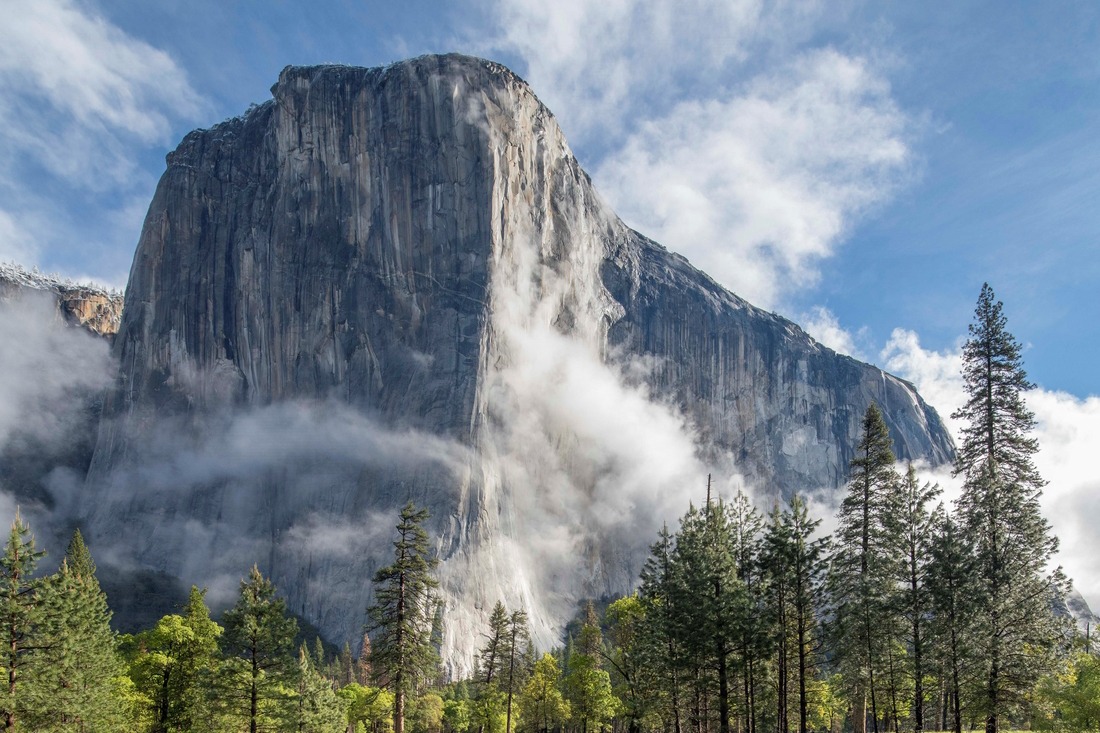There’s so much to see in Yosemite National Park! When planning your first trip, it can be hard to know where to begin. Start with these 10 famous Yosemite landmarks to make sure you don’t miss out on any of the park’s treasured destinations.
As the park’s dedicated philanthropic partner, Yosemite Conservancy provides resources to protect Yosemite landmarks, fund research, run educational programs, and more. And with the privilege of conserving Yosemite, we’ve got everything you need to know to make your own stellar Yosemite adventure.
1. Yosemite Falls: One of the world’s tallest waterfalls
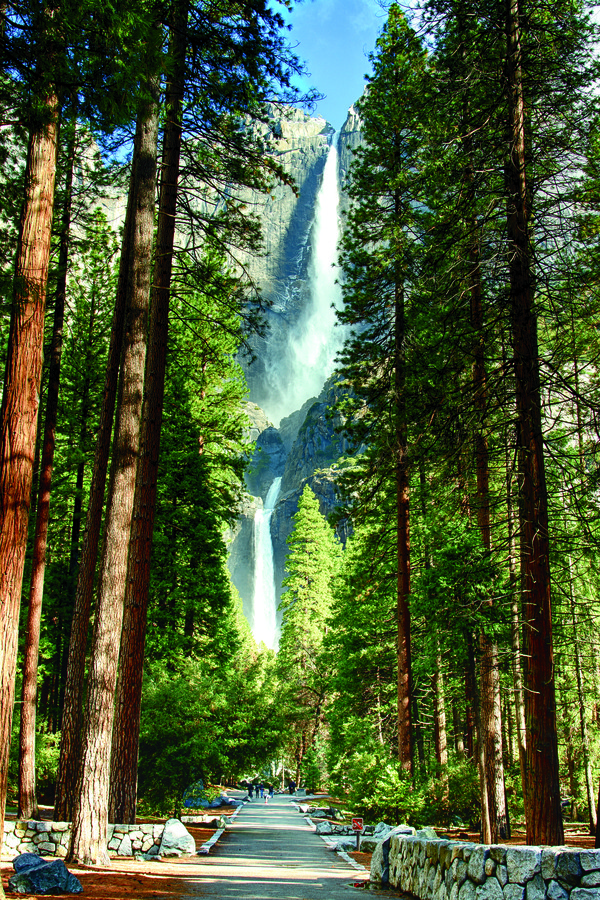
Choose your own Yosemite landmark adventure with a hike to one of the world’s tallest waterfalls. You could take a short one-mile stroll to the base of Lower Yosemite Fall — this option includes an accessible pathway to the viewing area. Or lace up your boots and hike all the way to the top of Yosemite Falls — a 7.2-mile round trip with 2,700 feet of elevation gain. Either way, Yosemite Falls is an iconic way to spend an afternoon in Yosemite Valley.
As one of the most famous landmarks in Yosemite, our donors funded an extensive rehabilitation of the Lower Yosemite Fall trail to protect the ecology and improve the visitor experience.
Start your adventure by taking a look at what Yosemite Falls looks like right now on our webcam. Do you already love Yosemite Falls? Check out the Yosemite Falls icon book in the Conservancy webstore for more history and photography on this Yosemite landmark.
2. Half Dome: The heart of Yosemite Valley
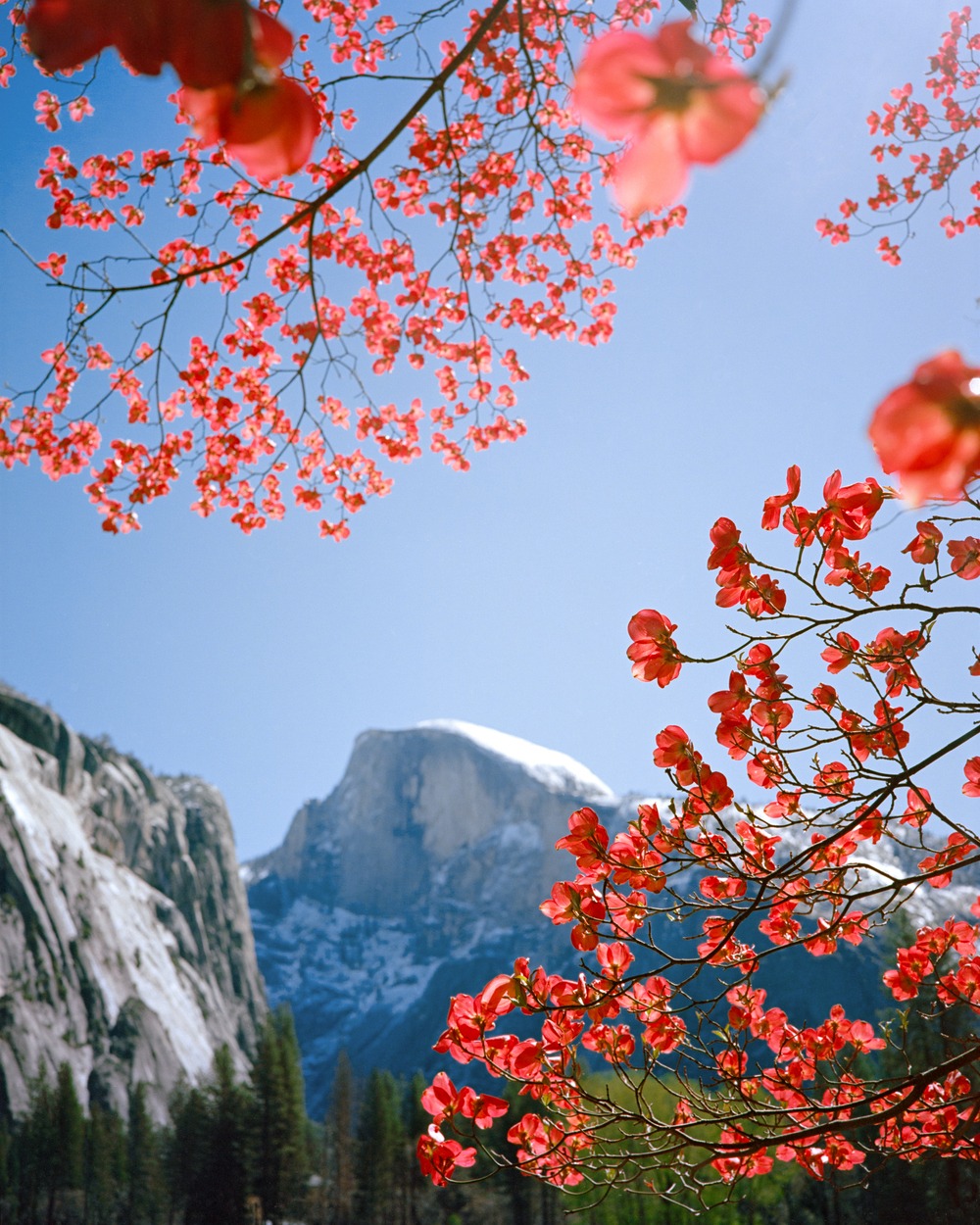
Perhaps the most famous icon in Yosemite, Half Dome stands proudly at the eastern edge of the Valley. Whether you’re ready to apply for a Half Dome cables permit or prefer to gaze at it from the floor of the Valley, views of Half Dome never get old.
Many Yosemite Valley meadows including Stoneman’s meadow across from Curry Village, Ahwahnee Meadow near the famed Ahwahnee Hotel, as well as the Cook’s Meadow loop near Yosemite Village, present unique views of Half Dome —– and are great for catching the glow on the dome at the end of the day.
Want to stand under the face of Half Dome? Try the Mirror Lake hike, with a 2-mile out and back or a 5-mile loop option. In the spring, the face of Half Dome reflects gracefully in Mirror Lake’s still waters.
Need some inspiration from home? Peek at what it looks like right now with our webcam.
One of our key conservation projects up ahead is to revitalize the Mist Trail — the most popular trail in the entire National Park Service — which leads ambitious hikers toward Half Dome’s summit.
3. El Capitan: The hub of Yosemite climbing
Home to climbers, peregrines, and bats, El Capitan’s sheer cliffs reach over 3,500 feet into the sky. Stop by El Capitan Meadow in the warm seasons and find the donor-funded Ask a Climber program to peer through telescopes and learn about how climbers navigate the big walls of El Capitan.
While climbers are scaling El Capitan, hikers can choose adventures such as portions of the Valley Loop trail, the Four-Mile trail, and Dewey Point trail to access various vantage points of the iconic cliff face.
Want to see more views of El Capitan without a hike? El Capitan is part of the famous vistas from both Tunnel View and Valley View, framing Yosemite Valley across from Bridalveil Fall.
Thanks to donor support, Yosemite Conservancy has funded research into Bat Habitat and White-Nose Syndrome, Peregrine Falcon Protection, and Big Wall Plants, all of which call El Capitan home.
4. The Grizzly Giant: The landmark sequoia of Mariposa Grove
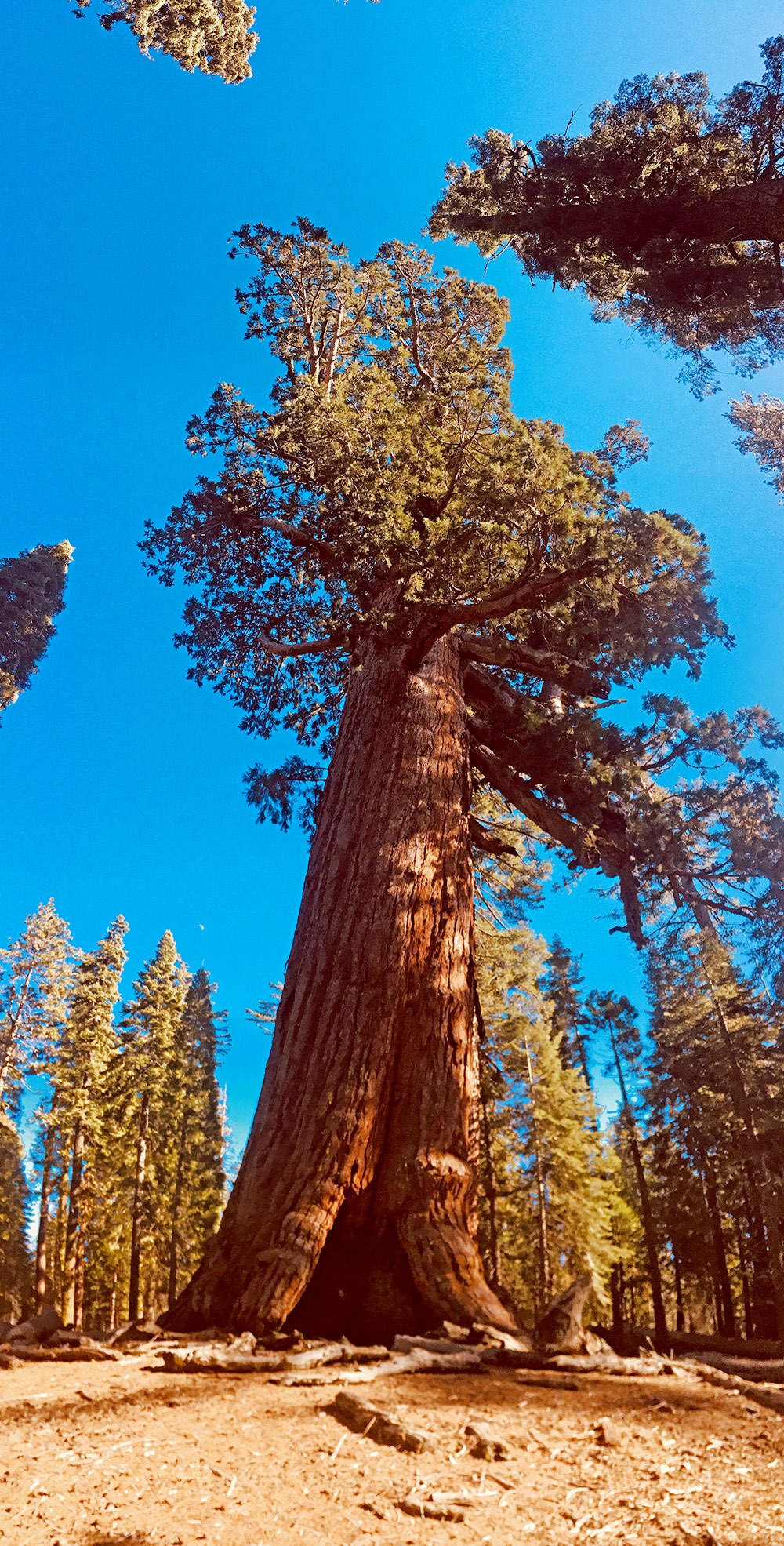
The Grizzly Giant is one of the largest living sequoias in the world let alone the Mariposa Grove of Giant Sequoias —– the largest of Yosemite National Park’s three giant sequoia groves. Estimates place the Grizzly Giant at around 2,900 years old give or take a few hundred years.
Giant sequoias are the largest living trees on earth. Their iconic rusty red fibrous trunks span outward at their bases allowing them to reach skyward. Giant sequoias rely on a delicate balance of fire, water, sunlight, and space. Hiking around giant sequoias can be a transcendent experience, seeing these graces from another era still enduring.
In the summer months a shuttle transports visitors from the Mariposa Grove Welcome Depot to the Grove Arrival Area. From the shuttle drop off, take a stroll through Mariposa Grove to marvel at the Grizzly Giant and many other giant sequoias.
Mariposa Grove is especially magical to visit during the winter months. Be prepared for icy and/or snowy conditions and to hike the additional two-mile shuttle route or along the Washburn trail to access the Mariposa Grove.
We’re proud to have funded and facilitated the restoration of Mariposa Grove over the last two decades to preserve the Grizzly Giant and its neighboring sequoias, Conservancy donors continue to support current work to protect sequoias in Yosemite as well as in collaboration with the Giant Sequoias Land Coalition.
5. Glacier Point: The bird’s–eye viewpoint
Glacier Point is one of our favorite Yosemite landmarks. The view from over 7,000 feet encompasses Half Dome, Yosemite Falls, Yosemite Valley, and the surrounding Sierra Nevada. This granitic expanse is the perfect locale for sunrise viewing, sunset picnics, or gazing up at the stars.
Glacier Point is accessible seasonally by car via Glacier Point Road or by foot via the Four Mile trail (which is actually closer to 5 miles one way) and Panorama trail.
One thing you won’t see at Glacier Point is a glacier. The point was created when two glaciers historically met from Little Yosemite Valley and Tenaya Canyon to carve out Yosemite Valley.
The Conservancy has been invested in Glacier Point for over a century. Beginning with the donor-funded creation of the Glacier Point Geology Hut in 1924 to the rehabilitation of the entire overlook in 1997. Today, we’re working in partnership with the National Park Service to restore the Glacier Point Geology Hut and update its exhibits.
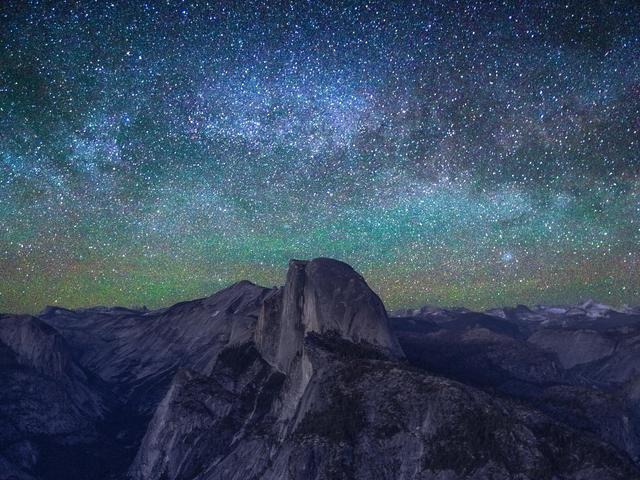
6. Bridalveil Fall: The famed waterfall
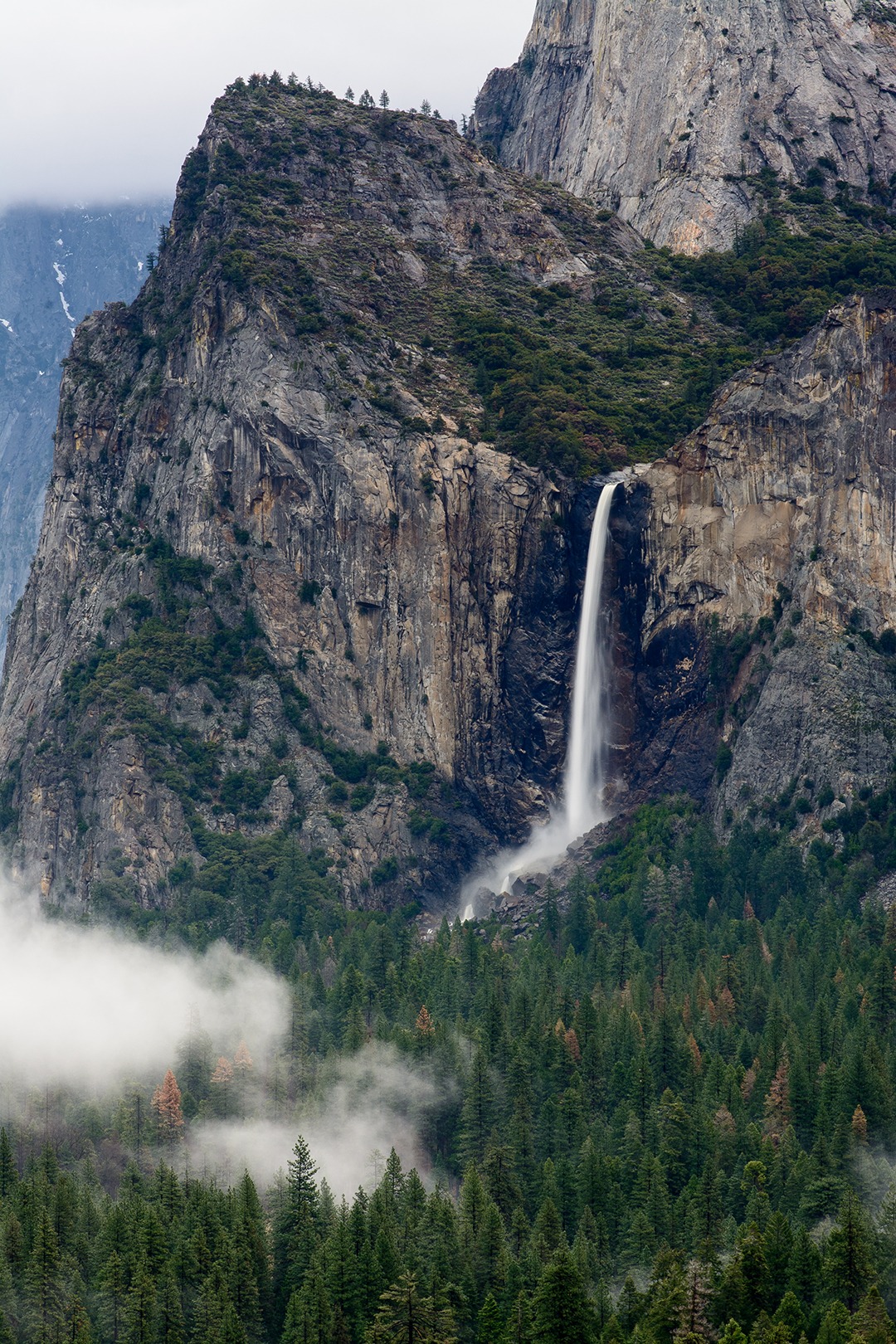
Bridalveil Fall is typically the first prominent waterfall you see when entering Yosemite Valley. Water flows from Bridalveil creek and then tumbles down 620 feet into the Valley at Bridalveil Fall. Bridalveil is a prime example of what is called a hanging valley — representing the glacial forces that have carved and shaped Yosemite into the
park that it is today. Take an easy and accessible stroll through the new donor-funded paths to marvel at this waterfall that flows year-round.
Along with El Capital, Bridalveil Fall can be viewed at the Tunnel View and Valley View vistas from a distance.
Bridalveil Fall is known as “Pohono” to Southern Sierra Miwuk Indians — one of the seven associated Tribes of Yosemite National Park.
7. Tunnel View: the classic vista
One of the most renowned views, when traveling on Highway 41 is the one and only Tunnel View. Drive through the Wawona Tunnel, which was completed in April 1933, and then stop for the breathtaking views of Yosemite Valley as your first introduction into the park.
Tunnel View is the subject of many artists. Even famous photographer Ansel Adams created work in the area such as the 1938 Clearing Winter Storm, which would later grace the grooved containers of Hills Coffee cans, bringing a taste of Yosemite to kitchens across the country.
Thanks to the support of our donors, Tunnel View’s iconic viewpoint was restored in 2008. The project included an expansion of expanded handicap accessible viewing area, improvements to the flow of traffic, new educational exhibits, and restored rockwork.
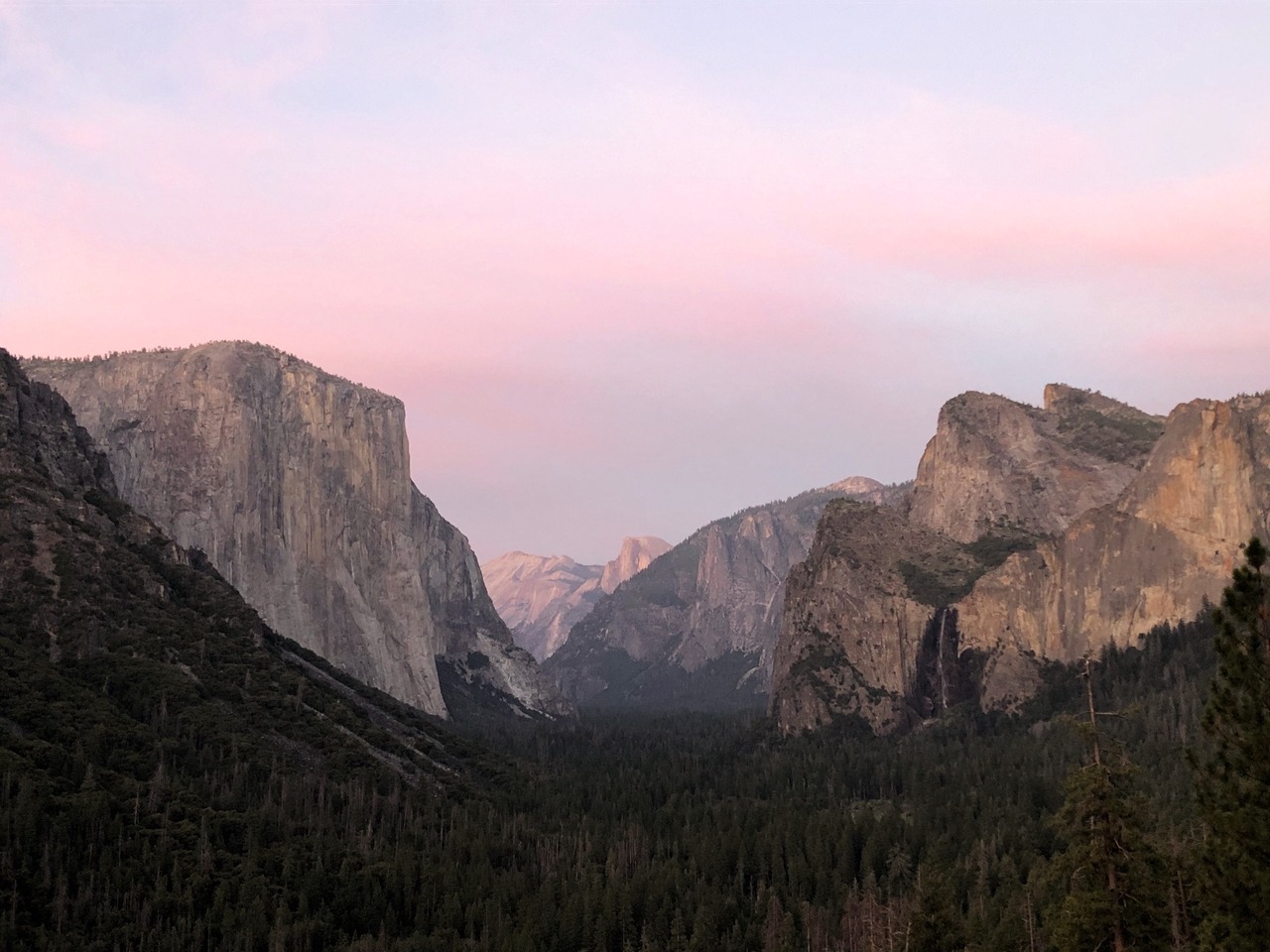
8. Olmsted Point: Jumping off point for the High Sierra
Located along the famous Tioga Road, Olmsted Point is the perfect overlook before jumping into the High Sierra. Take a gander from this viewpoint to see Half Dome from a different angle than that of the Valley, as well as views of Tenaya Lake and Clouds Rest.
During summer months look for Conservancy volunteers who enjoy bringing out spotting scopes so that visitors can watch brave hikers ascend the Half Dome cables.
Hikes near Olmsted Point include several amazing alpine lakes —– May Lake, Tenaya Lake, and Cathedral Lakes.
In 2006, Olmsted Point’s viewpoint got a facelift with new interpretive panels, improved parking, additional seating, and more thanks to Yosemite Conservancy donors. Take note that Tioga Road is closed during the winter months and plan accordingly.
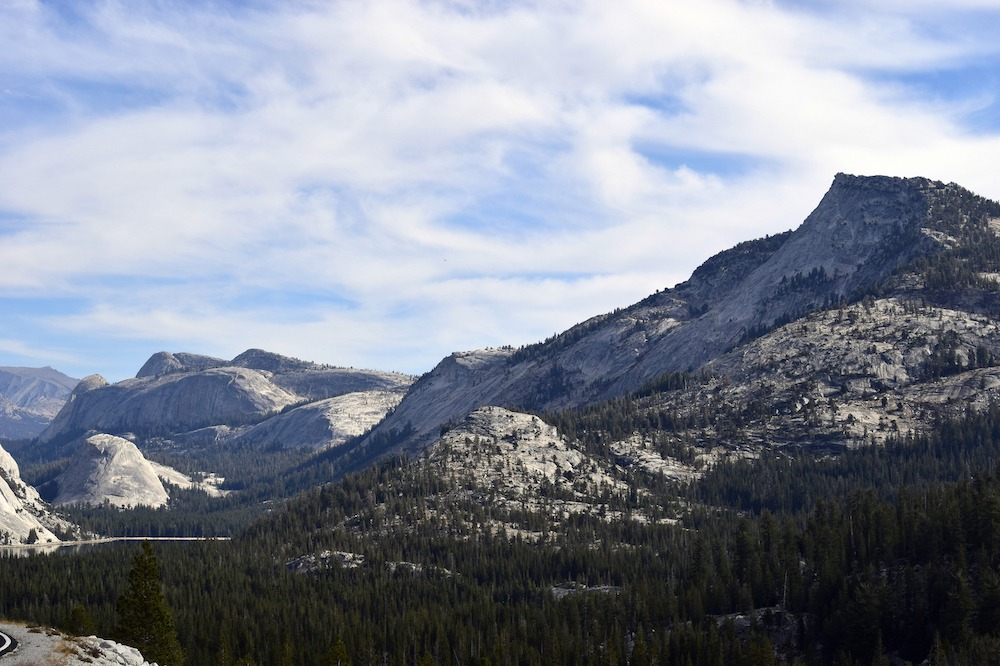
9. Tenaya Lake: Idyllic blue waters and sandy shores
Tenaya Lake is an easy to access picnic spot, hiking spot, and swimming spot located off of Tioga Road. Whether your activities are land or water-based, marvel at bright blue water surrounded by granite mountains and domes at Tenaya Lake.
At the northern end of Tenaya Lake, a parking area provides access to a sandy beach — great for building sandcastles, cozying up with a good book, or a relaxing picnic after a big hike. From its shores, you’ll be able spot the mystery trees of Tenaya Lake poking out of the center of the lake.
In the past decade, Yosemite Conservancy donors have funded multiple projects at Tenaya Lake to protect habitat and create a pedestrian route around the shoreline.
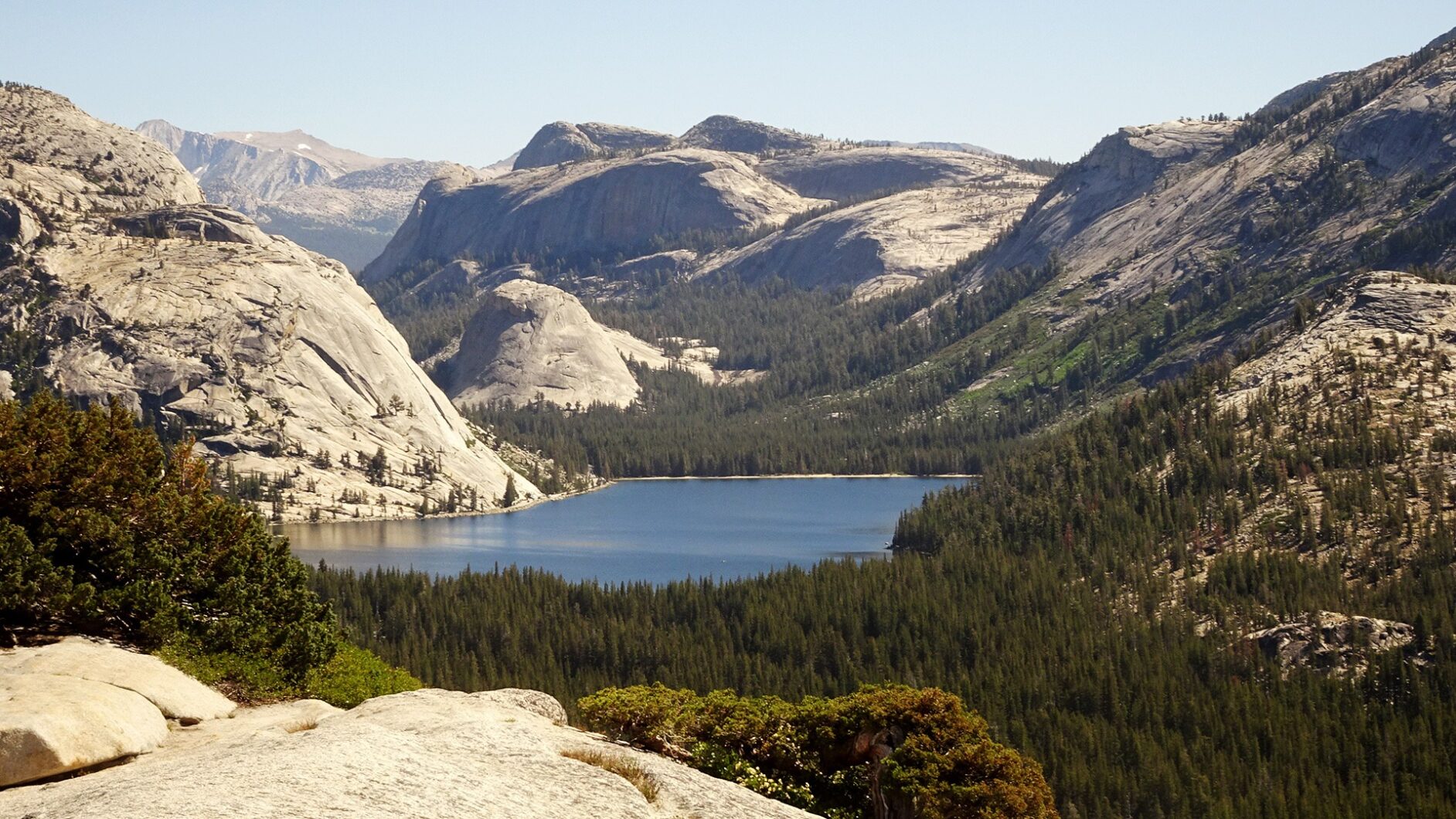
10. Hetch Hetchy: The hidden gem
Hetch Hetchy is often considered the hidden gem of Yosemite National Park. Located in the northwest of the park, this glacially carved valley echoes many of the dramatic cliffs and domes of Yosemite Valley, though often with far fewer crowds.
Hetch Hetchy, is at a lower elevation than Yosemite Valley —– meaning that it warms up more quickly in the spring and is a perfect place for spring and fall hikes, springtime wildflower peeping, and views of the reservoir.
Our favorite things to do in Hetch Hetchy are hiking to Wapama Falls or marveling at Kolana Rock. Seeing images of the waves of water and thinking about diving in? Save your swimming plans for other alpine lakes such as Tenaya. There is no swimming or water-based recreation at Hetch Hetchy because the reservoir is a critical water source holding up to 117 billion gallons of clean drinking water.
In addition to no water-recreation, please take note that Hetch Hetchy has its own entrance. The parking lot is only open during daylight hours and often fills by midmorning on weekends during the spring and summer. Check Yosemite National Park’s website for Hetch Hetchy’s current hours.
